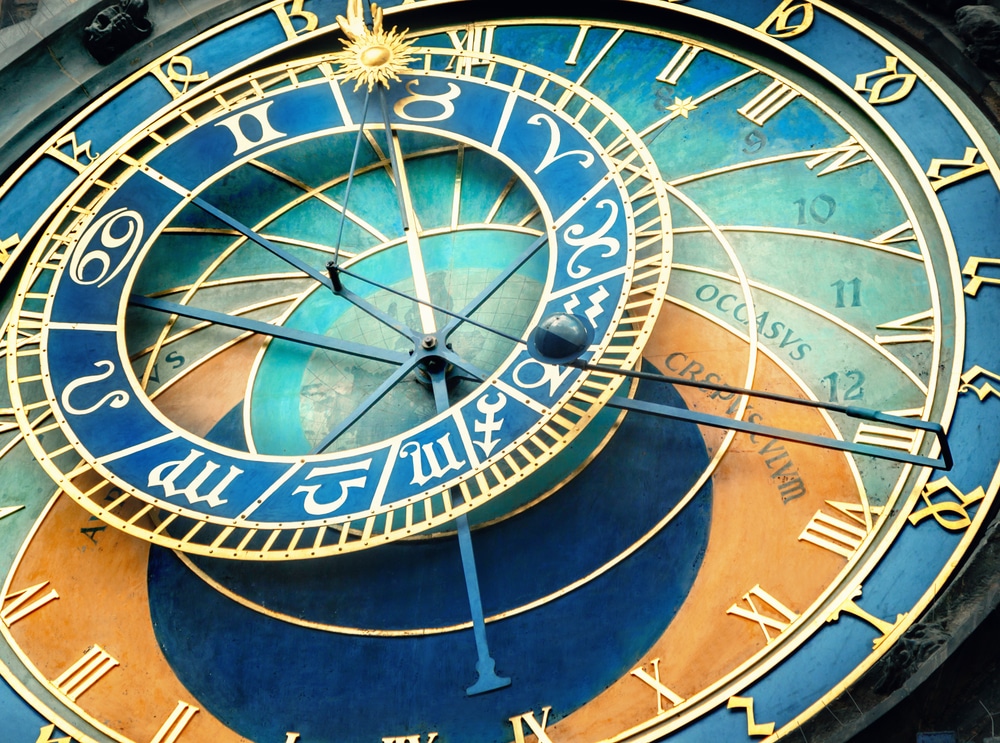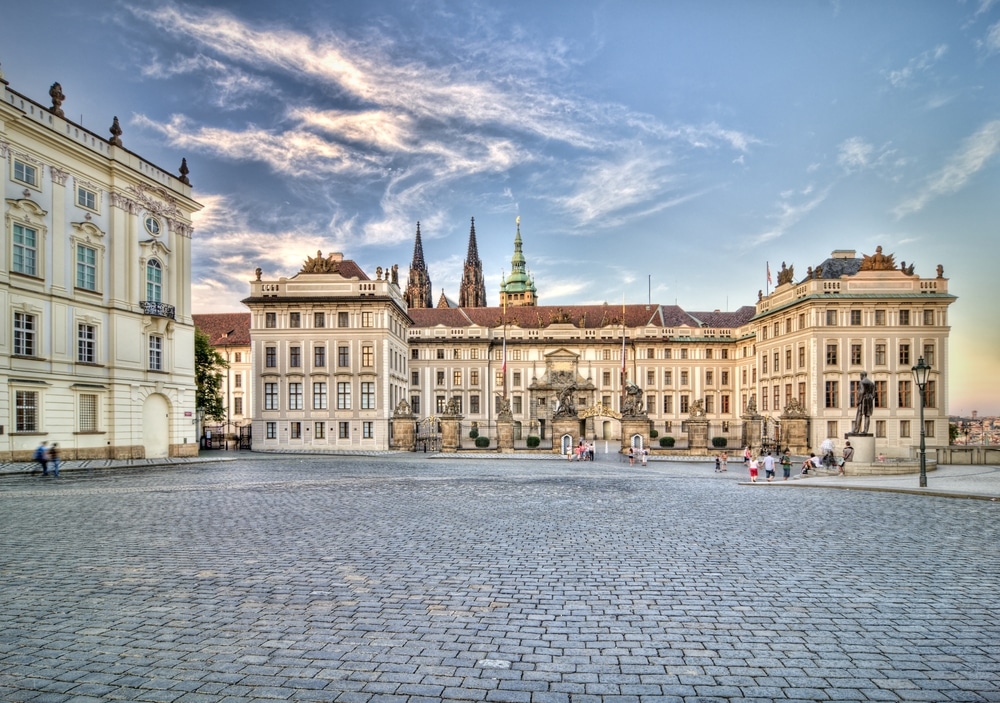- Home ›
- Czech Republic ›
- Prague
Astronomical clock
On the south wall of the Old Town Hall in Prague's Old Town, under an overhanging tabernacle, is a large clock that is one of Prague's most important landmarks.

It has been in operation for many centuries. Extremely beautiful to look at, it attracts a large crowd of admirers every hour on the hour. It is a technical masterpiece and has several superimposed components that rotate together:
- An astrolabe with
- a fixed dial
- surrounded by a rotating ring
and three hands
- Sun hand with golden hand and sun
- Moon hand with a dark sphere
- and a rotating dial with signs of the zodiac
The clockwork, with its external accessories, contains knowledge that was otherwise available to virtually no one, namely only scientists and astronomers. Anyone who wanted to learn something about the connections between heaven and earth went to the Astronomical Clock at the Old Town Hall.
In fact, this is a work of mathematicians, astronomers and clockmakers and its creation proceeds in several stages. After the construction of the Town Hall in the 14th century, the mechanical clockwork was executed from 1410 onwards by the clockmaker Nicholas of Kaaden (c. 1350 - c. 1480) according to the plans of the scholar Jan Šindel (1375-1458). Šindel was a professor of mathematics and astronomy at the young Charles University from 1409. Charles University was founded by Charles IV in 1348; it is the oldest university in the Holy Roman Empire of the German Nation and one of the oldest universities ever. Prague had been the imperial capital since the coronation of the emperor, so it is easy to understand why a clock was needed that combined all the knowledge about heaven and the world. For where should such a clock stand, if not in the centre of the empire? Also, or perhaps because Charles IV had already been dead for some years and his son Wenceslas IV had been voted out of office in 1400.
As with other astrological clocks in Stralsund, Bern, Münster and Esslingen, such complex masterpieces not only represent the knowledge of their time. Often found in the context of town halls and churches, they have a deeper meaning as memento mori ("remember death"), the knowledge of the transience of life. Heaven and earth are connected by the concept of time. It was no different then than it is today, only the tools and concepts have changed.
The dial is surrounded by tracery and figures from the workshop of Peter Parler. In 1551 extensions were made to the clock (sundials, half hour). Under the astronomical dial, a calendar sheet by the Czech painter Josef Mánes from the 19th century replaces an older calendar sheet. Next to it are pairs of wooden allegorical figures: philosopher and angel, astronomer and chronicler.
The Twelve Apostles above the astronomical dial arouse particular interest among visitors who arrive on the hour, as the doors open to reveal all twelve figures. They date from the 17th century. In addition, the automaton figures on the sides come to life: Vanity and Greed, Death and Lust. The cock at the top crows, Death turns his hourglass. A fascinating spectacle about the passing of time.



